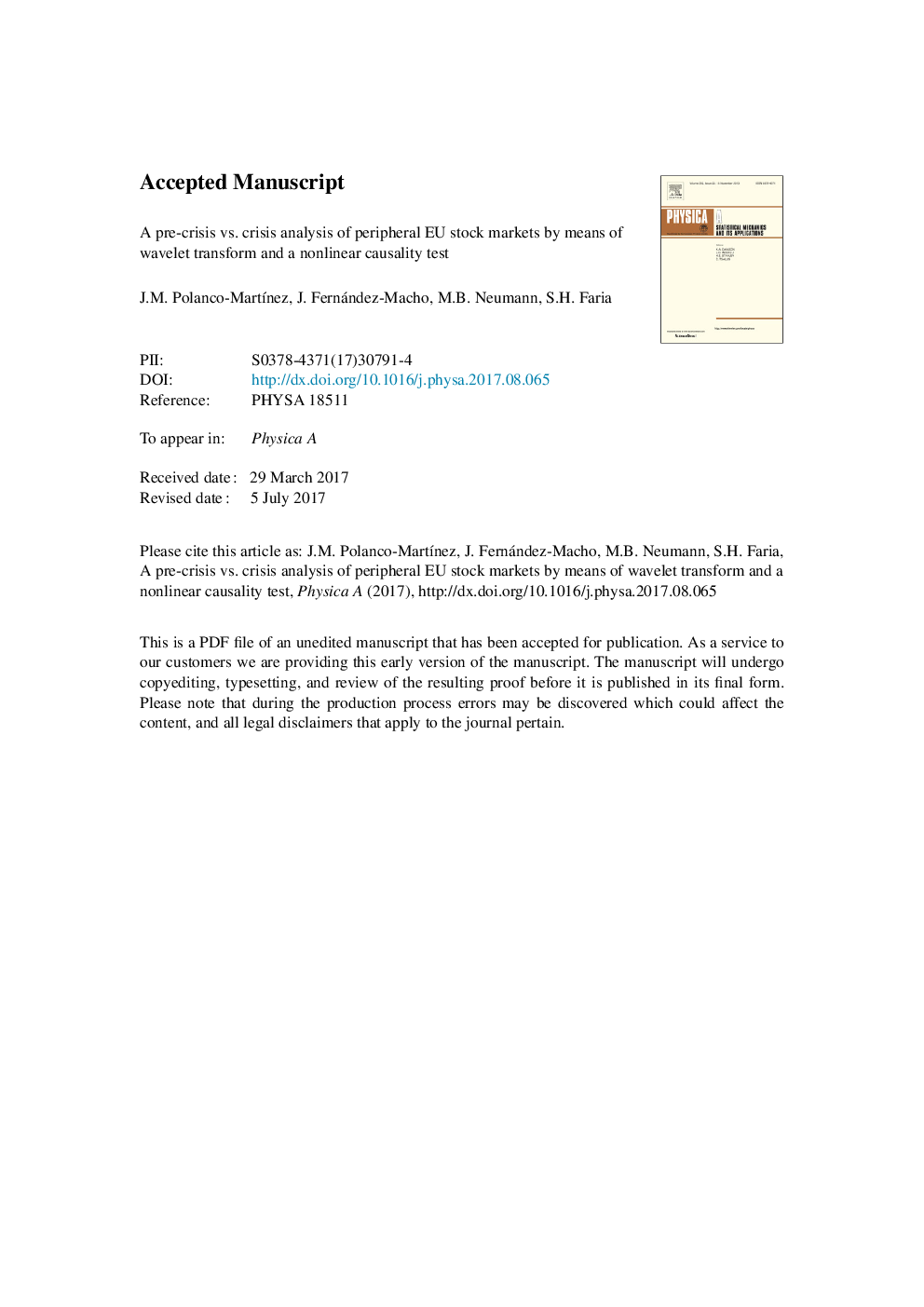ترجمه فارسی عنوان مقاله
تجزیه و تحلیل بحران پیش از بحران در مقابل بحران بازارهای سهام محصوالت اتحادیه اروپا با استفاده از تبدیل موجک و یک آزمون علیت غیر خطی
عنوان انگلیسی
A pre-crisis vs. crisis analysis of peripheral EU stock markets by means of wavelet transform and a nonlinear causality test
| کد مقاله | سال انتشار | تعداد صفحات مقاله انگلیسی |
|---|---|---|
| 101164 | 2018 | 34 صفحه PDF |
منبع

Publisher : Elsevier - Science Direct (الزویر - ساینس دایرکت)
Journal : Physica A: Statistical Mechanics and its Applications, Volume 490, 15 January 2018, Pages 1211-1227

